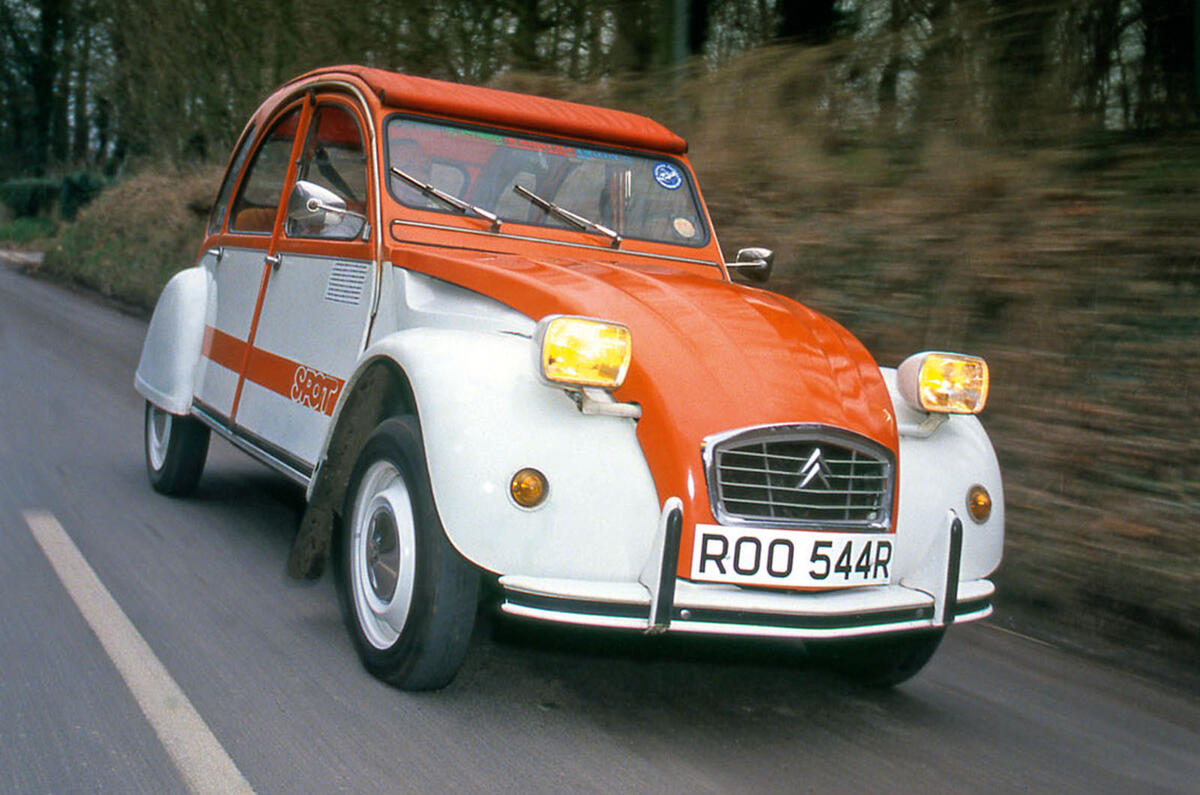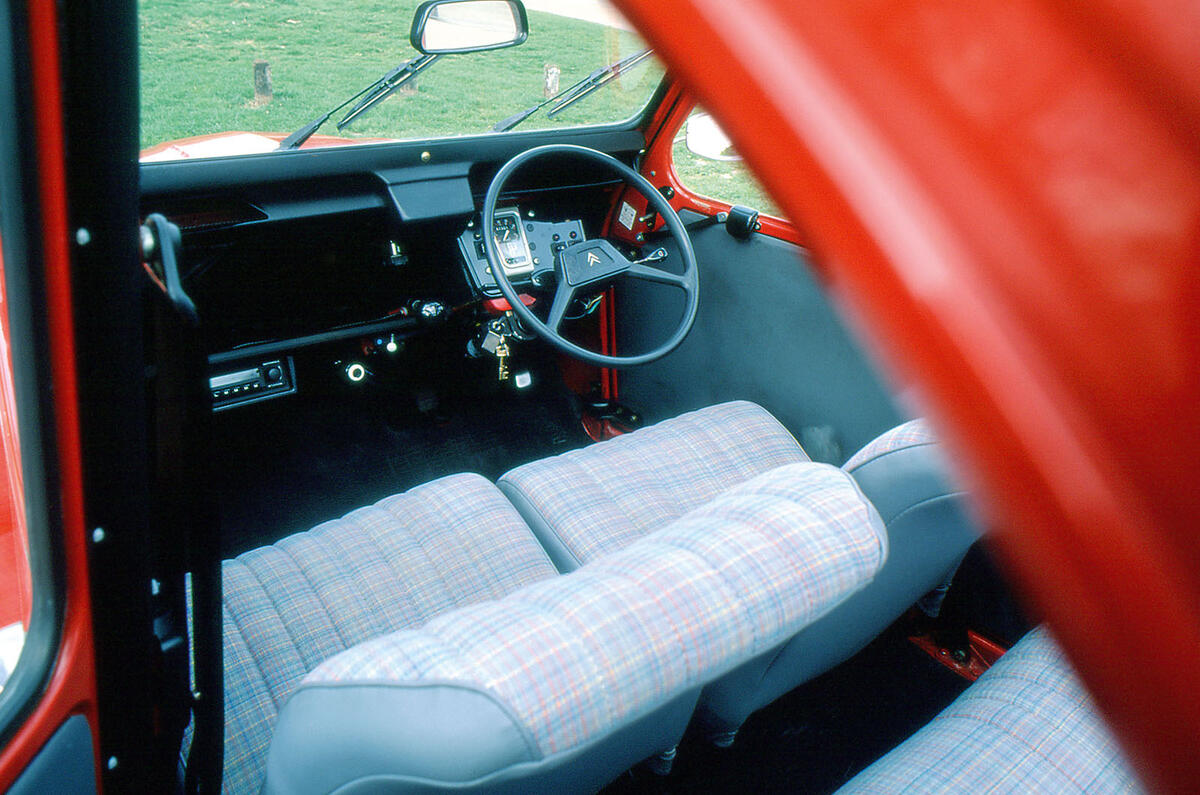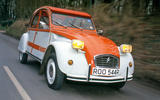A good Citroen 2CV – one that’s rust-free but needs the odd dent removing here and a lick of a paint there – costs from around £5500, with fully restored examples (new chassis and bodyshell, respray and retrim) starting at around £9000.
So one 2CV that is for sale for £93,495 must be pretty special. Indeed, it’s a rare 2CV Sahara 4x4 from 1963. The front wheels are driven by one 12hp engine, and the rears by another. Although each engine has a gearbox, there is, fortunately, only one gearstick, one clutch pedal and one accelerator. Only 694 Saharas were built, a figure dwarfed by the almost four million 2CVs that were made during the model’s 42-year lifespan (1948 to 1990) and the additional five million examples of variants, such as the Dyane, that were also made.
Generally speaking, the 2CVs you’re likely to find at more sensible prices are Specials, Dollys and Charlestones from the 1980s. They have front discs and rear drums and are powered by an air-cooled 602cc flat twin, with pushrod-operated, overhead valves, producing 29bhp.

I bought a new 2CV Special, finished in Buttermilk, in 1987. It cost just £2600, but the following day, I cancelled my order because I got cold feet. Thirty years later, it’s a decision I still wrestle with. By now, without a heated garage to keep it dry, it’d be on a new chassis; if I were feeling flush, I’d choose one of the pukka steel ones supplied by the 2CV Mehari Club Cassis (mehariclub.com), fabricated using the original tools, or its galvanised equivalent – one by SLC, say.
It might have one or two new panels, possibly even a front lower bulkhead, a notorious rust trap.
I’d be a dab hand with the grease gun. The 2CV’s steering kingpins like a splodge every 1000 miles. Throughout, I’d have been obsessive about the condition of the cardboard heater tubes near the engine, which, if left to deteriorate, sag onto the exhaust pipes, at which point a ‘tin snail’ becomes Escargot Flambeà (with thanks to Steve Cropley).




















Join the debate
Add your comment
Ironic that French cars
Ironic that French cars always used to have soft, sophisticated suspension as their roads were much worse than ours...I wonder how the quality of French and British road surfaces compares now!
Owned one – sold dozens
I have fond memories of selling new 2CV’s in the early 80’s along with a few scary recollections of trying to teach young novice drivers how to change gear –with a dash column and back to front! I did buy a one year old example for my wife at that time, which she loved dearly, but decided it had to go after completing a 200 mile motorway journey in a November storm. I occasionally saw the car on the road, still looking fab up until a few years ago. Records show it is currently SORN and the MOT only ran out in August. Good to know “Muttley” is still around.
Had several, along with
Had several, along with Dyanes. On the whole, I prefer the Dyane for practicality but once on the road, there's not a lot of difference. The missus and I have rolled chassis, with steering column, from one lock-up to another along city streets. I doubt we'd get away with that now. Just put the replacement body on blocks, roll the chassis under and bolt it down. Engine changes can be done in a couple of hours by one person without lifting gear (though the Law took a dim view of me doing that at the roadside.
Unless you're very careless, they're utterly unbreakable by human hand. Metal worms know their weak spots though. Mine were all quite old at the time, hence the extreme spannering.